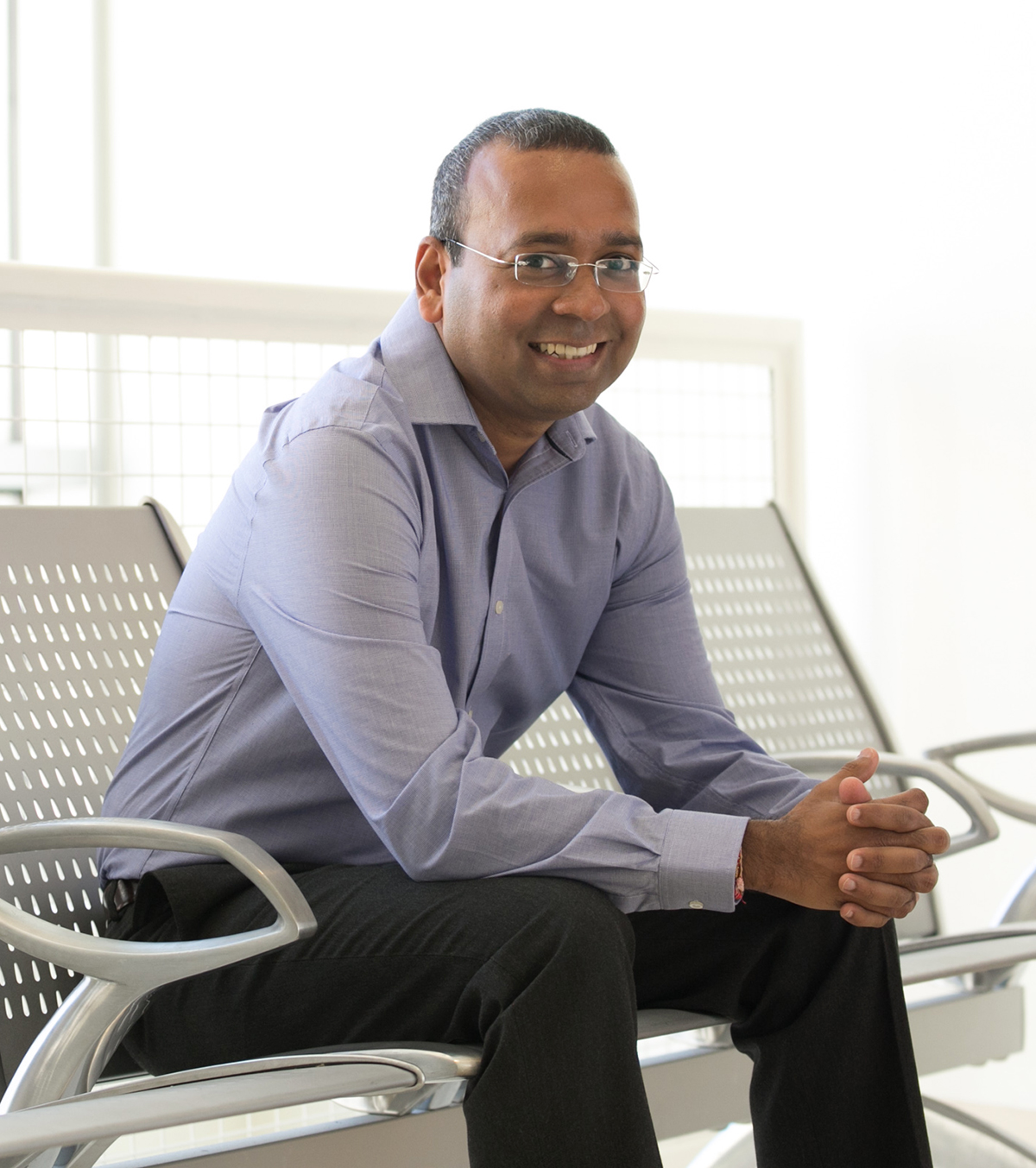Faculty

HITESH DOSHI IS AN ASSISTANT PROFESSOR OF FINANCE AT BAUER COLLEGE AND RECENTLY EARNED THE 2016 BEST PAPER AWARD FROM THE REVIEW OF ASSET PRICING FOR HIS CO-AUTHORED RESEARCH ON MUTUAL FUNDS.
We came up with a measure that allows us to figure out which funds are active … and beat the market going forward.
Assistant Professor Hitesh Doshi
Risk Taker
Assistant Professor's research on mutual funds scores with investors
Hitesh Doshi has done a good bit of research on credit risk and asset pricing. But for one topic — mutual funds.
The resulting research, published in the Review of Asset Pricing Studies and co-authored with colleagues Redouane Elkamhi and Mikhail Simutin of the University of Toronto, won the review’s 2016 award for best paper, along with a $10,000 prize.
We recently checked in with Doshi to learn more about his research, its practical implications and his background in engineering.
First, we’d like to hear about you.
A: I did my undergraduate work in India, and then I did my master’s at the University of Houston, both in engineering. And I worked for about seven or eight months at the Chicago Board of Trade. That’s when I decided to do my Ph.D. in finance. I graduated from McGill University in 2011.
What were you doing at the Board of Trade?
I was working as a junior quantitative analyst, kind of helping the senior quantitative analyst. I was implementing different trading strategies. You are basically trying to figure out smart trading strategies based on historical data.
Are you able to use your engineering background in the work you do now?
Yes. People from math and engineering can easily transition into a finance degree, because there is a lot of math in finance as well, and there’s lots of implementation. So, engineering is more of an implementation type of degree while math is more of a theoretical degree, and both of them are relevant for finance. I mostly do implementation type work, but if some- body had a math degree, they might do more theoretical work.
What is the focus of your research?
Broadly speaking — investment. In a more academic term, it is called asset pricing. Mostly I do credit risk, which is pricing models for corporate credit. … So I do most pricing of securities; the main objective in those studies is to examine the risk that you are taking on and the compensation that you are getting for taking on that risk.
Your prize-winning paper was on mutual funds. Can you explain?
When you invest in a mutual fund you have two choices: You can either invest in an active mutual fund where the manager is continuously trying to figure out underpricing and overpricing stocks and then essentially beat the market, right? The alternative is you invest in a passive mutual fund, which would just track some index (generally speaking, the S&P 500). Active mutual funds charge you fees for doing that, so generally the standard thing in academic literature is that on average, active mutual funds don’t add value, so basically they charge you higher fees, but they don’t really generate a return that is higher than what you would have gotten if you had just done index funds.
So what we do: We argue that there are some active mutual funds that can add value for investors. On average they don’t, but there are some that may add value for you, and we provide the measure for you to be able to identify those funds: How do I identify which active mutual funds would add value for me? We came up with a measure that will allow us to figure out which funds are truly active, and then we examine do they really beat the market going forward, and the answer is yes.
So this information has practical implications for investors?
Yes. Investment managers can actually rank funds based on our measure, instead of looking at past returns, for example. … So it would be useful for people who want to figure out which funds to choose from. There are tons of active funds.
